Rhodes, the largest of the Dodecanese islands in Greece, is a captivating destination known for its rich history, diverse landscapes, and vibrant culture.
Essential Information:
- Population: Rhodes Island is home to approximately 115,000 residents.
- Surface Area: Covering an area of 1,401 square kilometers, it’s the largest island in the Dodecanese.
- Airport: Diagoras International Airport (IATA: RHO).
- Athens to Rhodes: A quick 50-minute flight.
- Thessaloniki to Rhodes: Approximately 1 hour and 20 minutes by air.
- Beaches: Rhodes boasts a multitude of stunning beaches.
- Hiking Trails: Extensive hiking trails offer opportunities for exploration.
Historical Significance: Rhodes is steeped in history, featuring a range of historical landmarks and events. Among its notable highlights are:
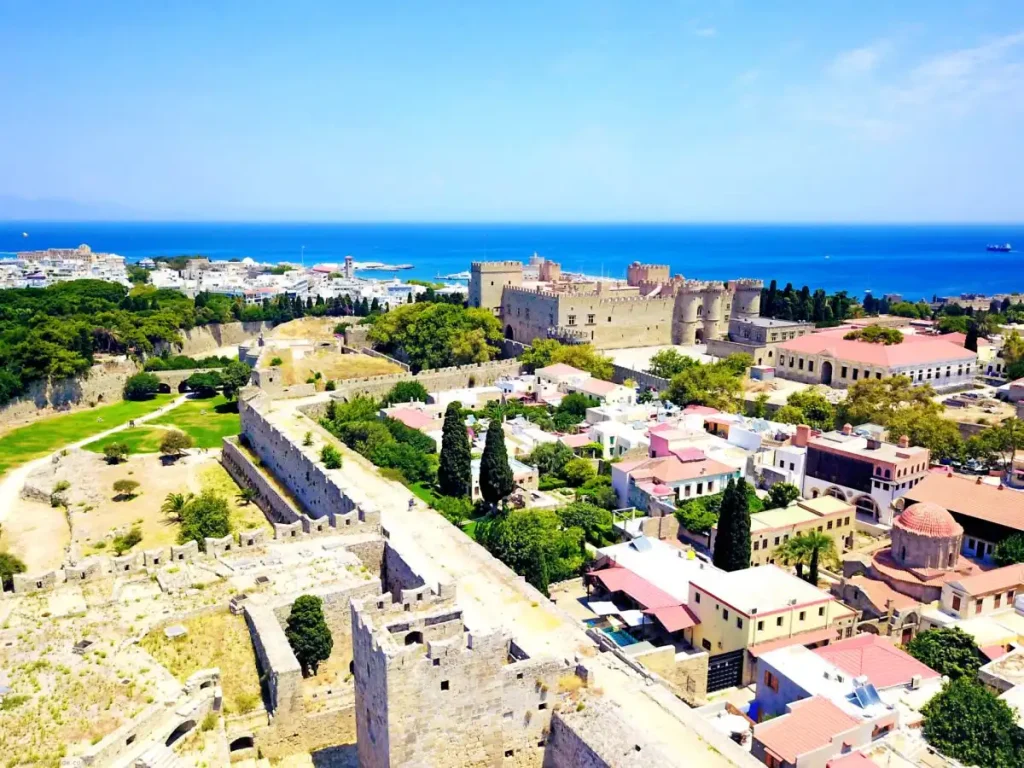

- The city of Rhodes, located on the island of Rhodes in the Aegean Sea, is a captivating blend of history, culture, and natural beauty.
- This historic city boasts a well-preserved medieval Old Town, a UNESCO World Heritage site, characterized by its labyrinthine streets, imposing walls, and medieval architecture. Within its ancient walls, visitors can explore the Palace of the Grand Master, stroll along the Street of the Knights, and discover numerous museums and historical sites.
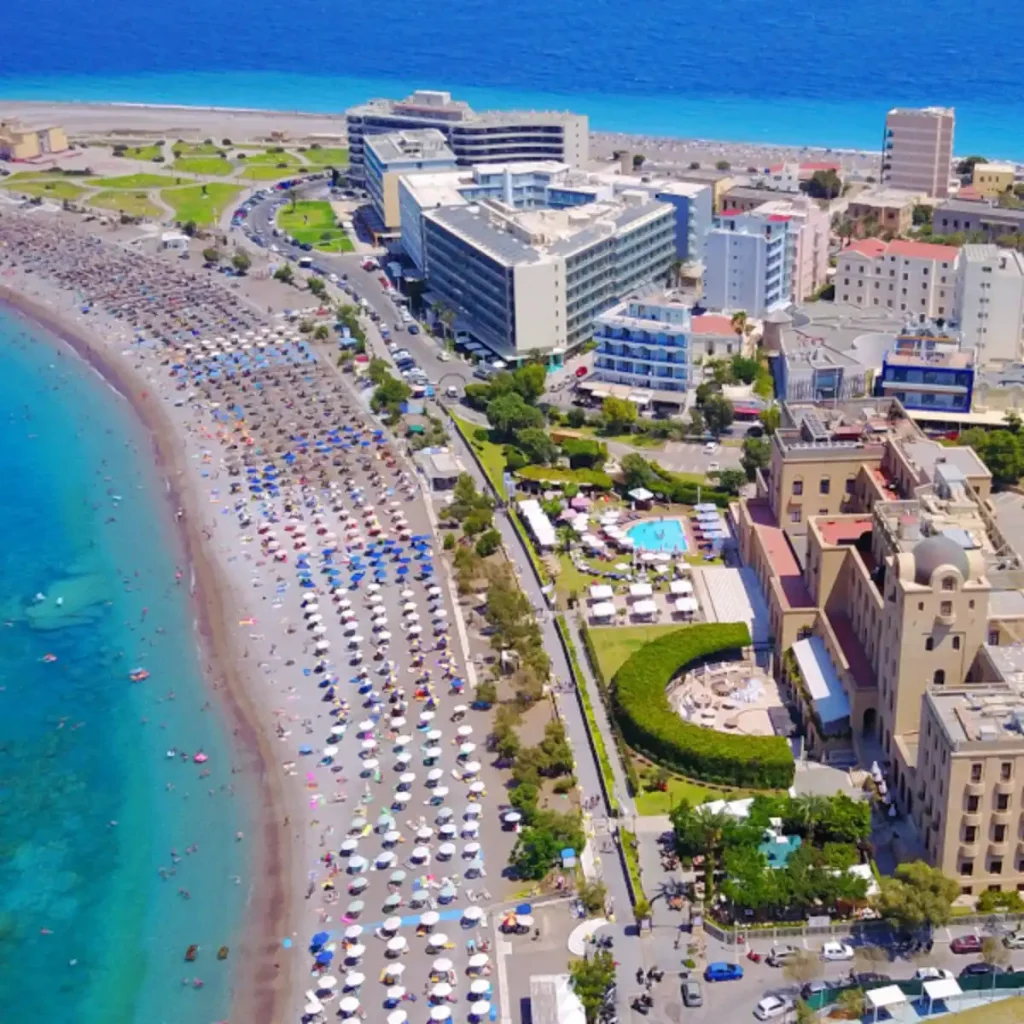

- Beyond its rich history, Rhodes offers vibrant cafes, restaurants, and shops, creating a lively and welcoming atmosphere. Its picturesque harbor, stunning beaches, and scenic landscapes make it a perfect destination for both history buffs and sunseekers, offering a unique blend of ancient charm and modern comforts.
Rhodes City boasts a variety of beautiful beaches
Elli Beach in Rhodes
Rhodes City boasts a variety of beautiful beaches that cater to different preferences. The most famous beach is Elli Beach, which lies just a short walk from the city center. This Blue Flag awarded beach features golden sands and crystal-clear waters, making it a popular spot for sunbathing and swimming. Visitors can also enjoy beachside cafes and water sports activities.
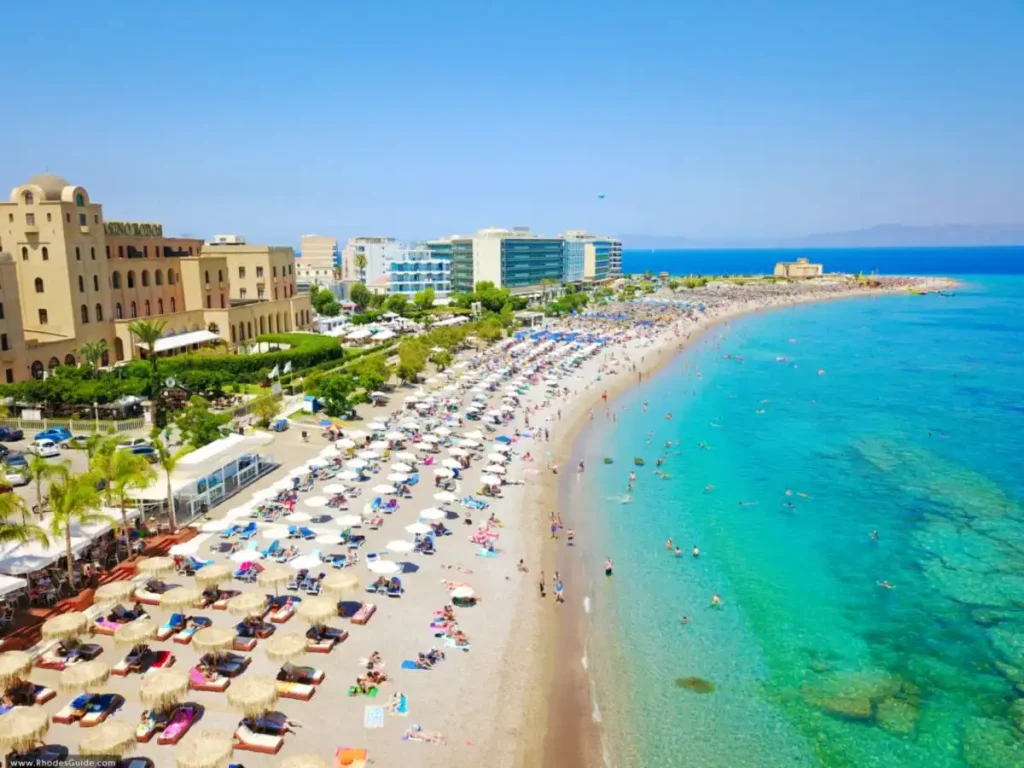

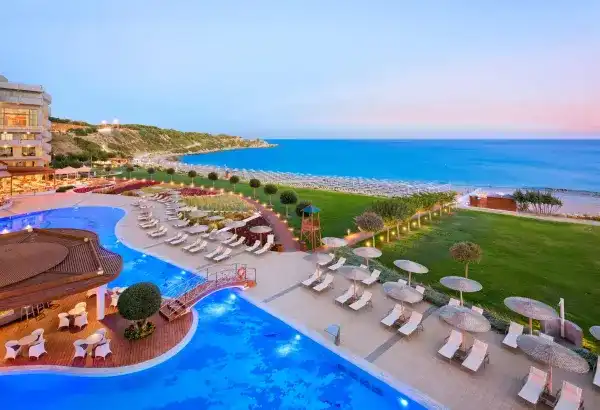

Zefyros Beach
Zefyros Beach, located near the Mandraki Harbor, offers a quieter and more relaxed atmosphere. With its pebbly shore and serene surroundings, it’s an ideal choice for those seeking tranquility.
Ixia Beach
For those interested in water sports and windsurfing, Ixia Beach is a fantastic option. Just a short drive from Rhodes City, it’s known for its steady winds and water sports facilities.
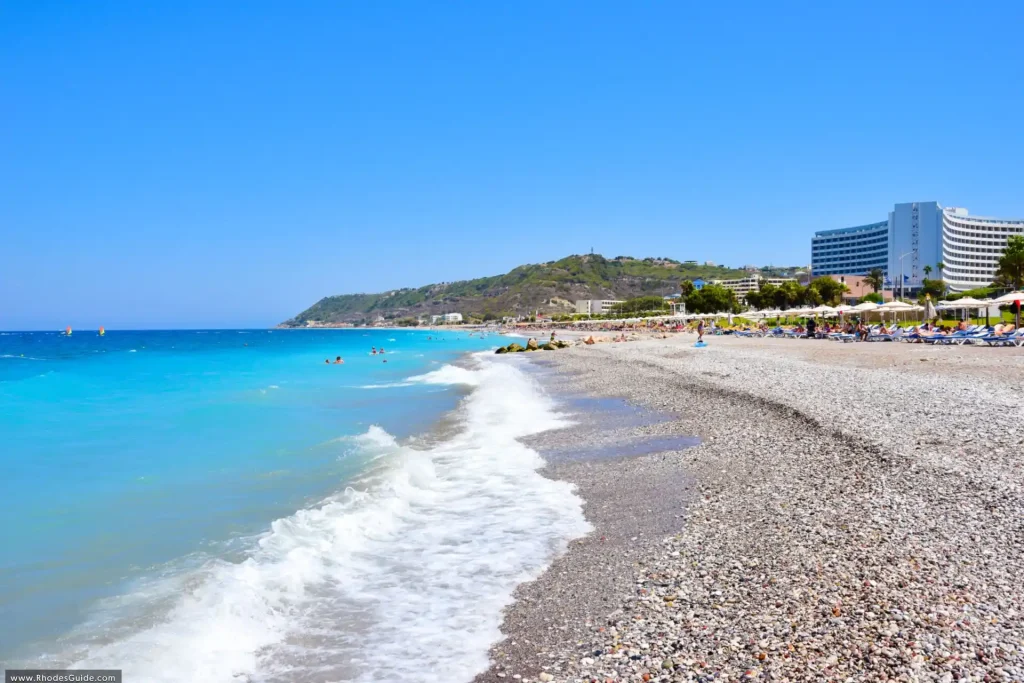

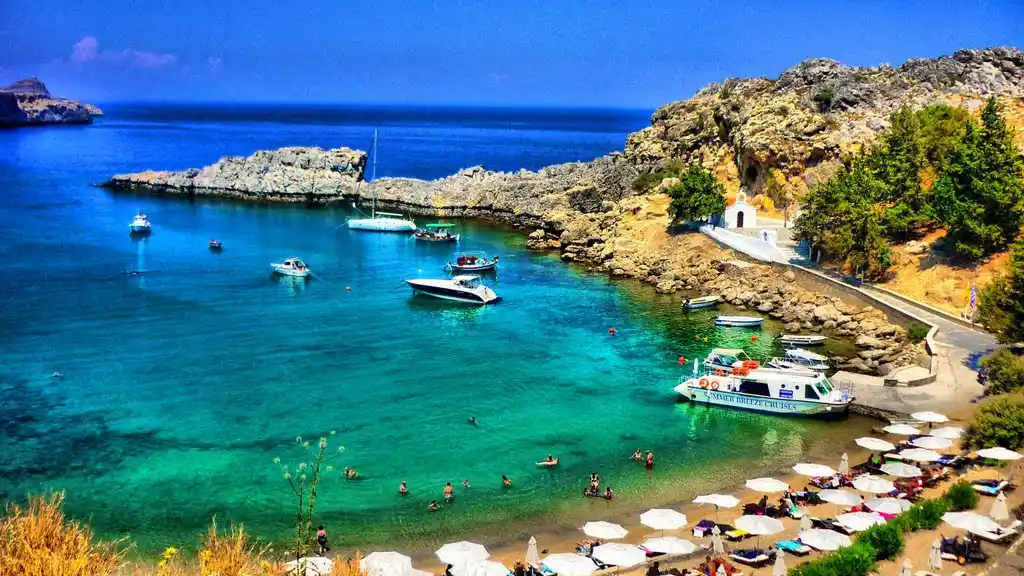

- Additionally, Agios Pavlos Beach, near the ancient ruins of the Acropolis of Rhodes, offers a mix of history and natural beauty. It’s a quieter beach with clear waters, perfect for a peaceful escape.
The Colossus of Rhodes
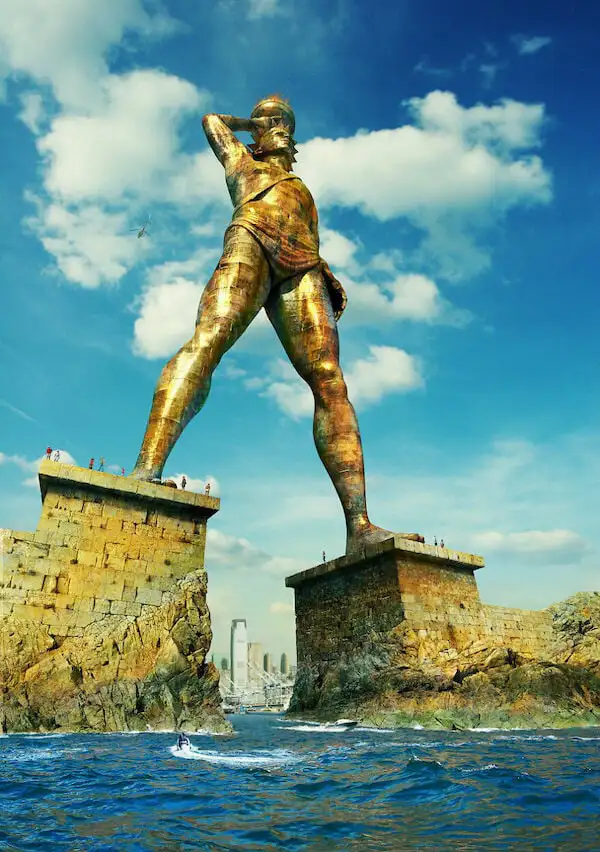

- The Colossus of Rhodes was a monumental statue that once stood proudly on the island of Rhodes, marking the entrance to its harbor. Built in the 3rd century BC, this awe-inspiring statue was dedicated to the sun god Helios and stood approximately 33 meters (108 feet) tall, making it one of the tallest statues of the ancient world. Constructed using a framework of iron and bronze plates, it was a marvel of ancient engineering.
- The Colossus of Rhodes was not only a symbol of the island’s grandeur but also a testament to the artistic and architectural prowess of its time. Unfortunately, the statue’s existence was short-lived, as it fell during an earthquake in 226 BC. Despite its relatively brief presence, the legend of the Colossus of Rhodes lives on, continuing to captivate the imagination of people worldwide as one of the most iconic symbols of antiquity.
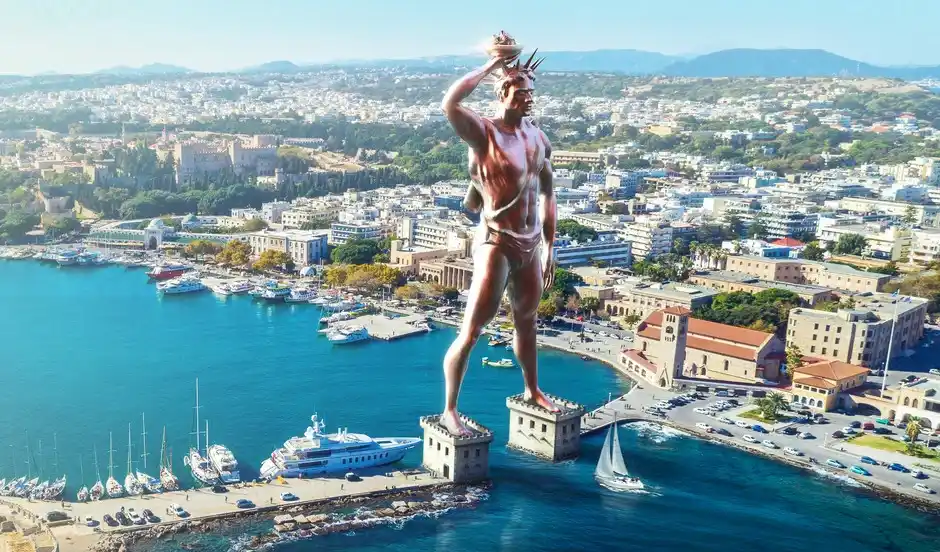

The Knights of St. John
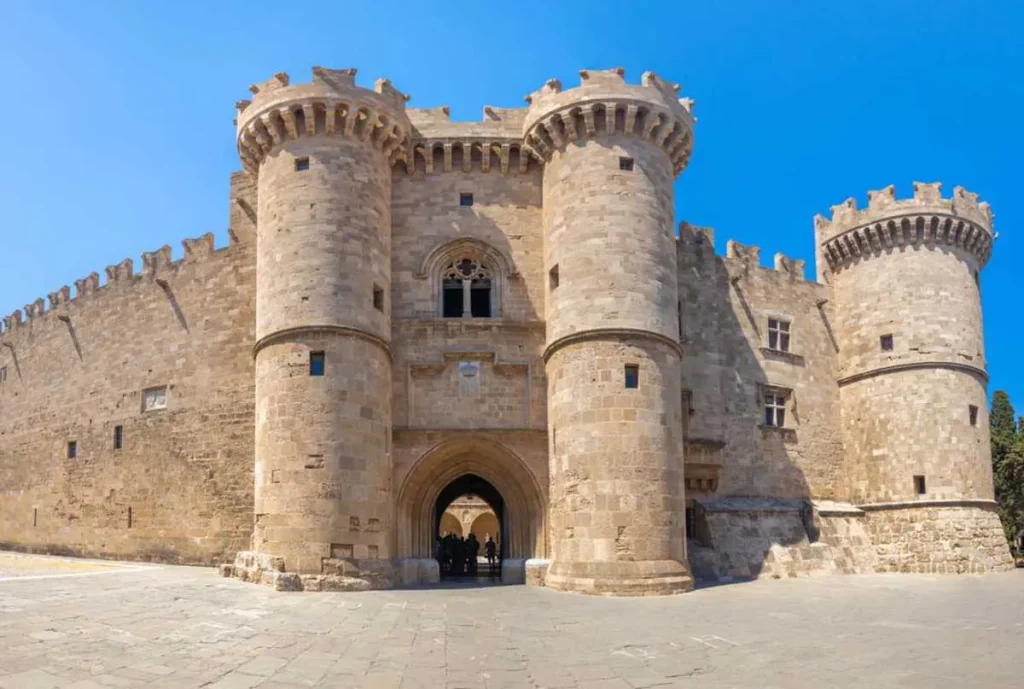

- The Knights of St. John, also known as the Knights Hospitaller or the Order of St. John of Jerusalem, were a prominent medieval Christian military order that played a significant role in the history of Rhodes. In 1309, after a successful siege, the Knights Hospitaller established their headquarters on the island of Rhodes, which they ruled until 1522. During their rule, the Knights fortified the island, transforming it into a formidable fortress.
- The medieval city of Rhodes, with its imposing walls and intricate architecture, remains a testament to their influence and prowess. The Knights of St. John were renowned for their commitment to defending Christianity and providing medical care to pilgrims and the wounded, and their legacy in Rhodes is an enduring symbol of their dedication and impact during the medieval period.
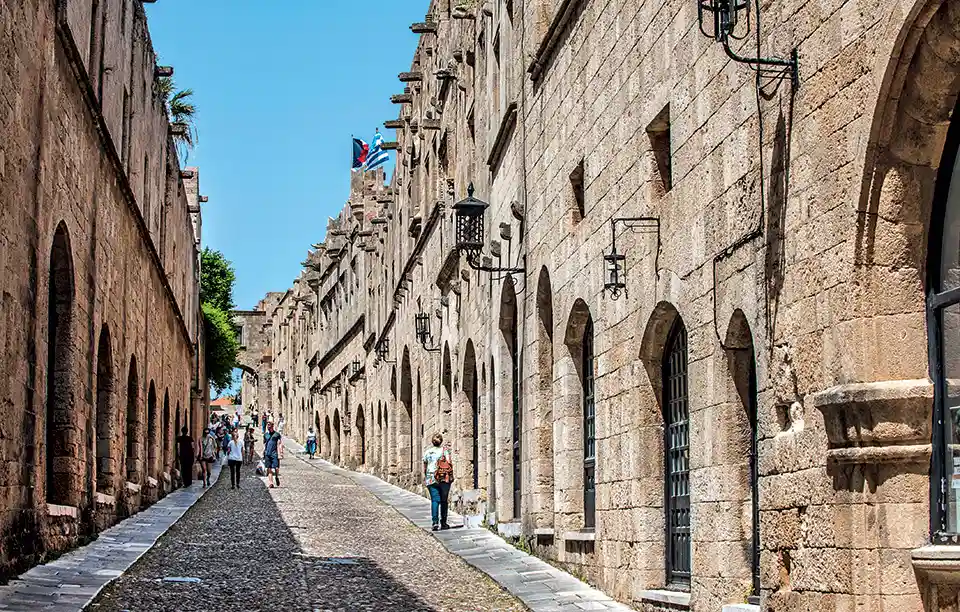

- The Colossus of Rhodes, one of the Seven Wonders of the Ancient World.
- The Knights of St. John, who ruled Rhodes during the medieval period and left behind a legacy of impressive architecture.
- Ancient ruins and archaeological sites that provide a glimpse into the island’s past.
The Ancient Stadium of Rhodes
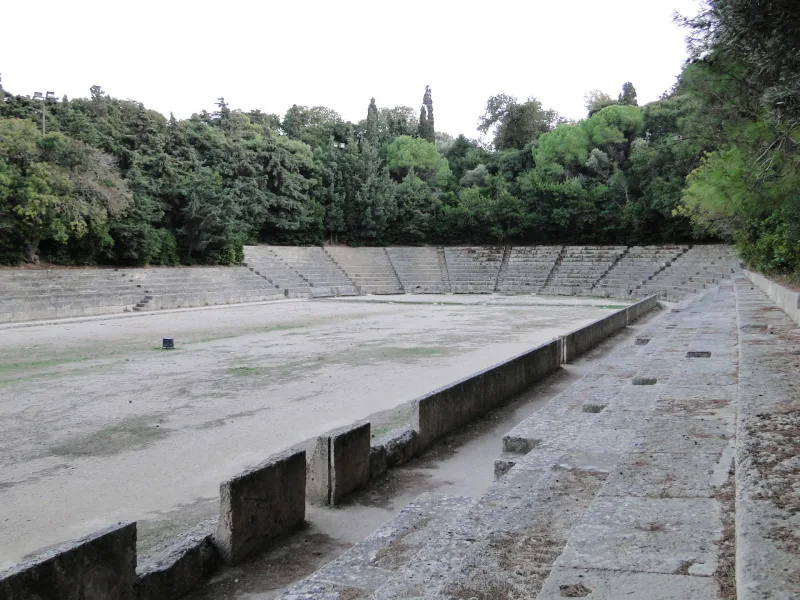

- The Ancient Stadium of Rhodes is a remarkable archaeological site on the island of Rhodes, offering a window into the sporting and athletic traditions of ancient Greece. Constructed in the 3rd century BC, this historic stadium boasts a well-preserved, elongated track, once used for athletic competitions and games.
- As one walks along the ancient course, they can imagine the cheers of spectators filling the air, making it a truly immersive experience. The stadium’s historical significance lies not only in its athletic use but also in its role as a testament to the enduring legacy of Greek sports and competitions. A visit to the Ancient Stadium of Rhodes provides a unique opportunity to connect with the island’s ancient past and appreciate the importance of sports in ancient Greek culture.
Local Cuisine and Famous Produce: Indulging in Rhodes’ local cuisine is a delightful experience. Some must-try dishes and specialties include:
The Archaeological Museum of Rhodes
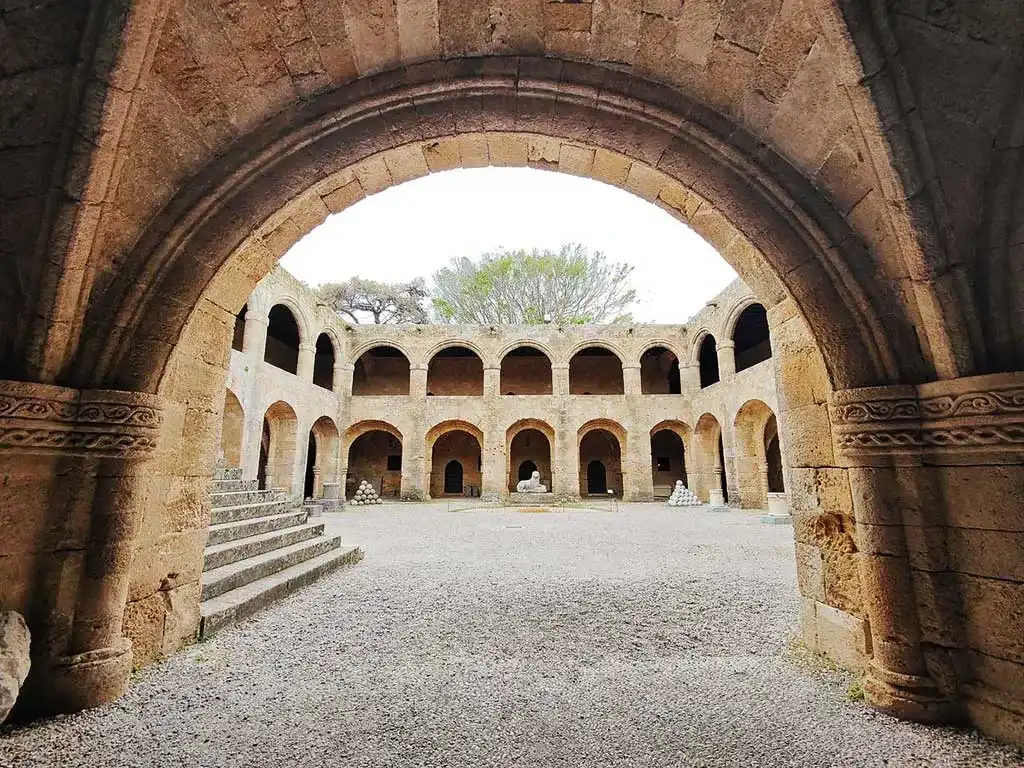

- The Archaeological Museum of Rhodes is a captivating repository of the island’s rich history and cultural heritage. Situated in the heart of Rhodes Town, this museum houses a diverse collection of artifacts dating back to antiquity. Visitors can explore an array of exhibits, from exquisite sculptures and pottery to ancient jewelry and everyday objects, each telling a unique story of Rhodes’ past.
- The museum provides a fascinating journey through time, offering insights into the island’s Hellenistic, Roman, and Byzantine periods. Whether you’re a history enthusiast or a curious traveler, a visit to the Archaeological Museum of Rhodes is a rewarding experience that deepens your understanding of the island’s illustrious past and its role in the broader context of ancient civilizations.
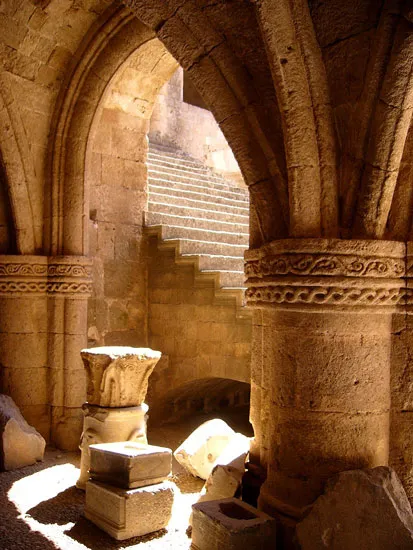

- Fresh seafood: Savor the flavors of the Mediterranean with dishes like grilled octopus and seafood risotto.
- “Pitaroudia”: These savory chickpea fritters are a beloved local snack.
Things to Do: Rhodes offers a wide range of activities and attractions for visitors to enjoy:
- Rhodes Town (Rodos): Explore the historical charm and medieval architecture of the Old Town, a UNESCO World Heritage site.
- Faliraki: Experience lively nightlife and relax on beautiful beaches.
- Lindos: Discover ancient ruins, including the acropolis, and wander through picturesque streets lined with white-washed buildings.
Maritime Influence: The maritime industry plays a vital role in Rhodes’ economy, with a strong maritime tradition and the presence of a Naval Academy contributing to Greece’s maritime excellence.















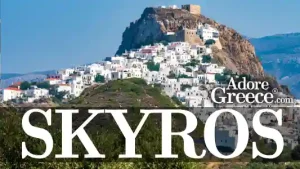



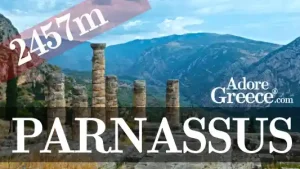





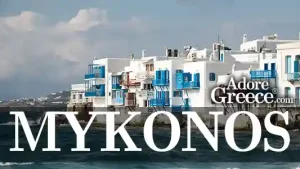










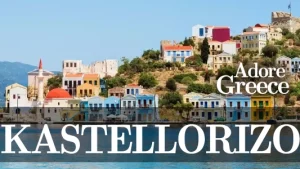


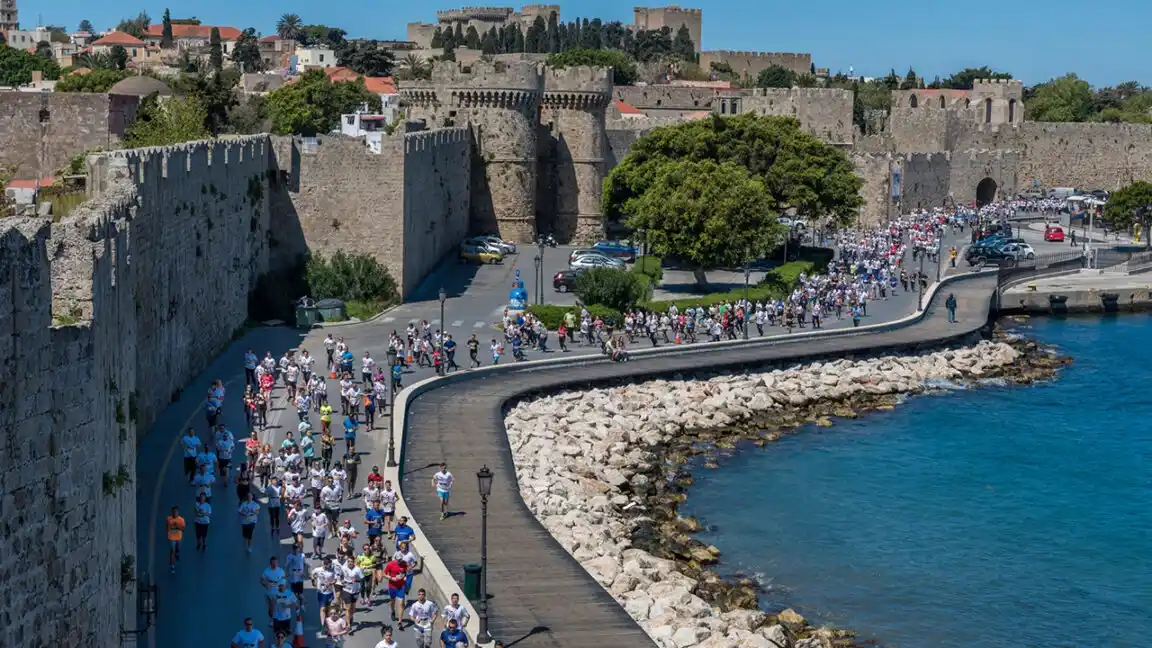


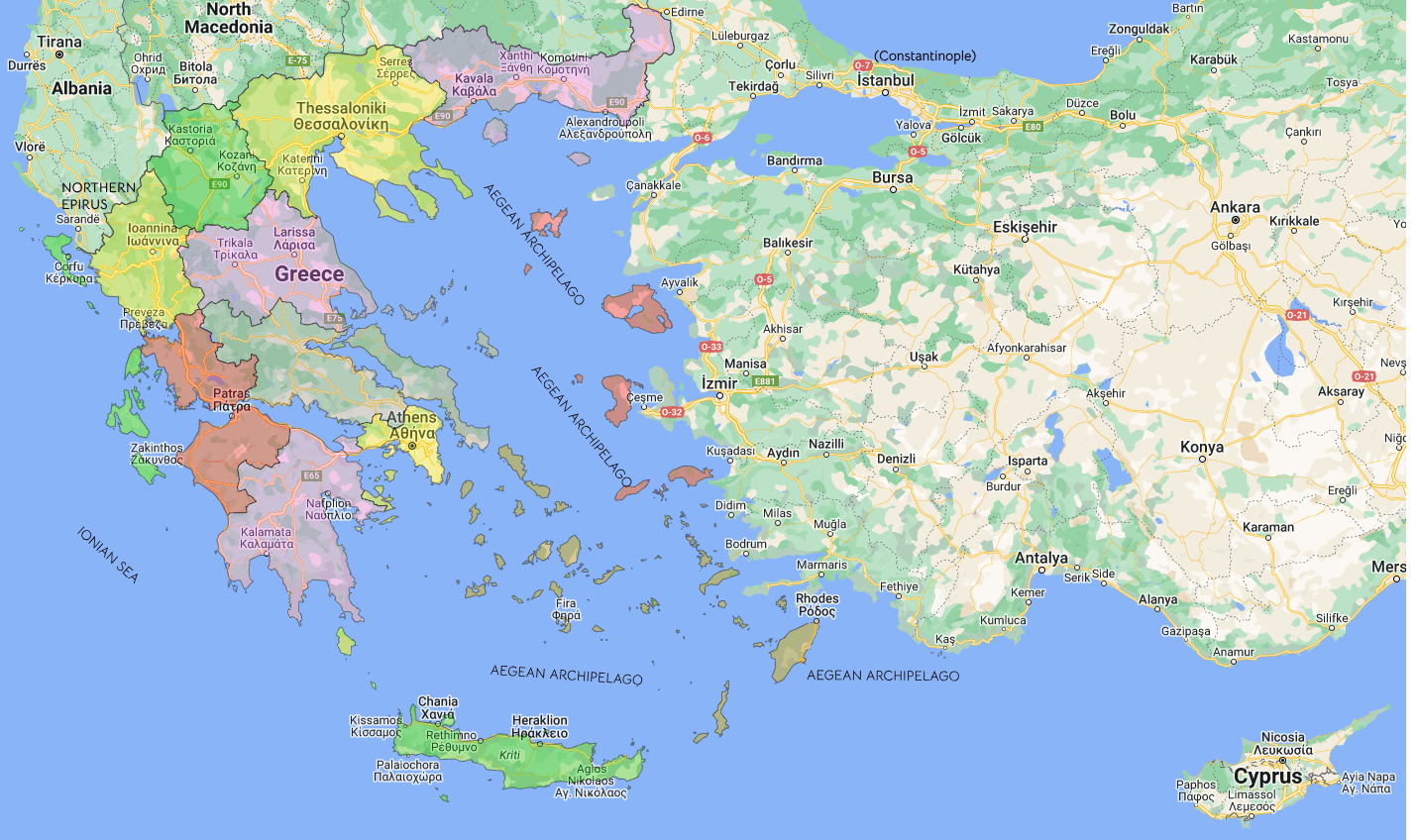
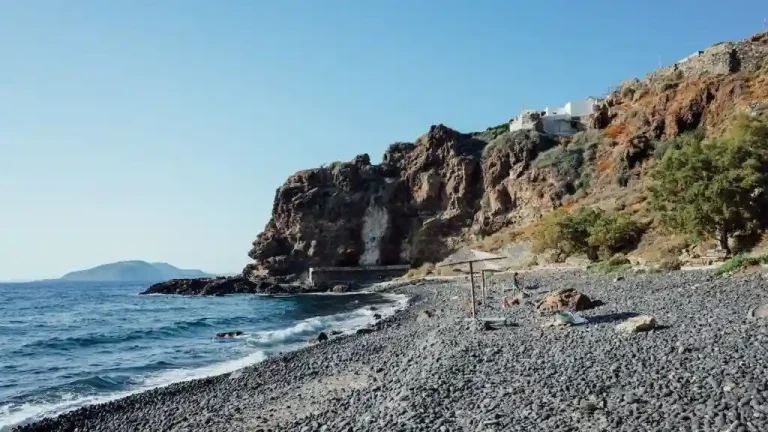
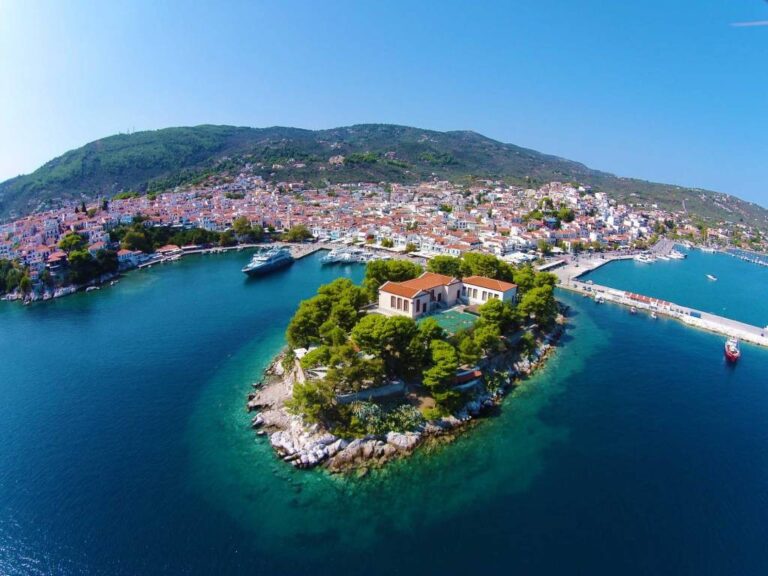
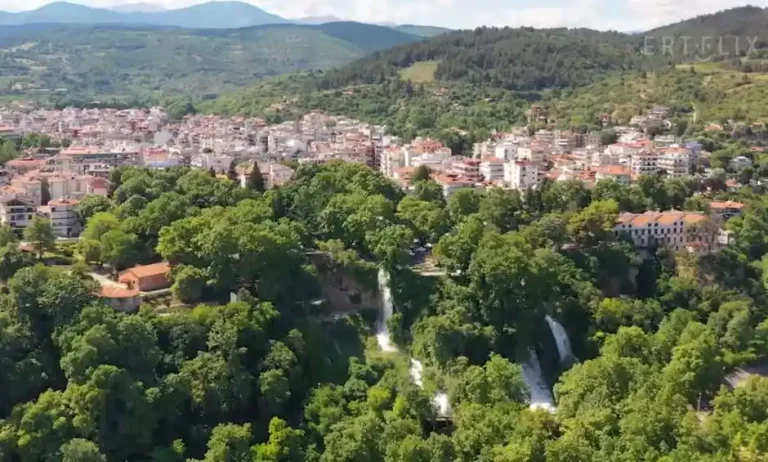
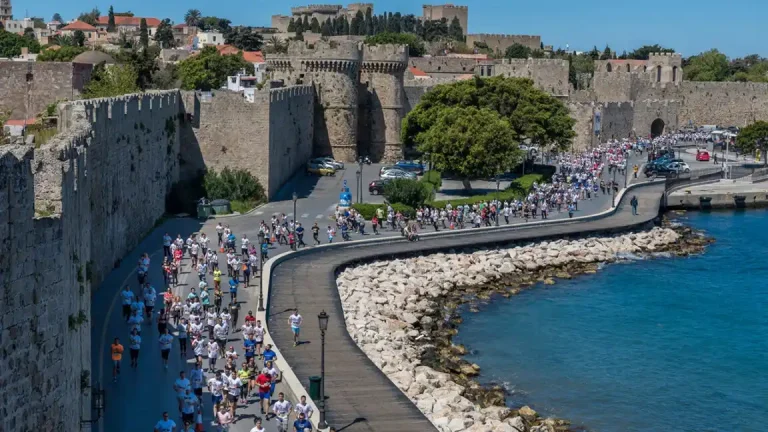
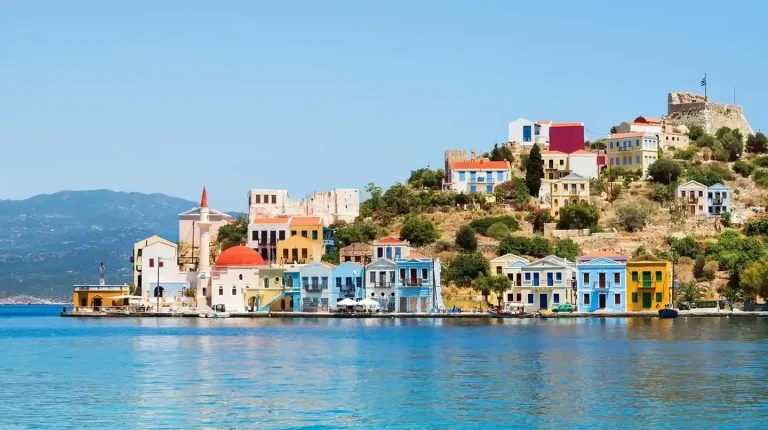
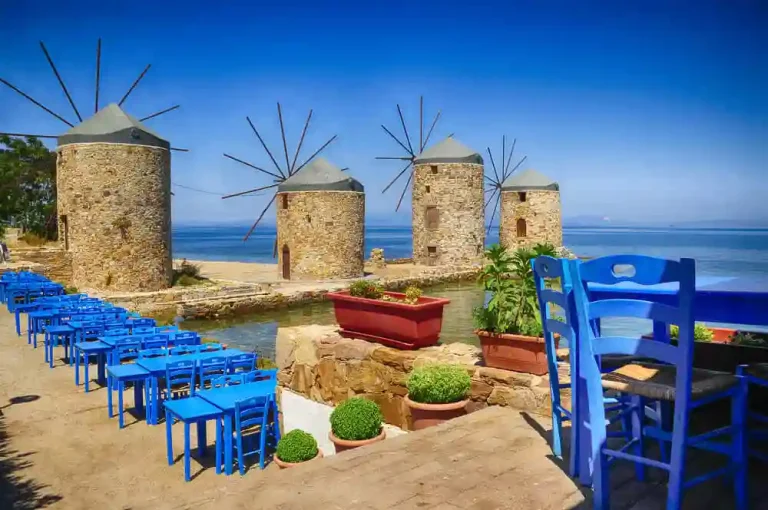
Comments are closed